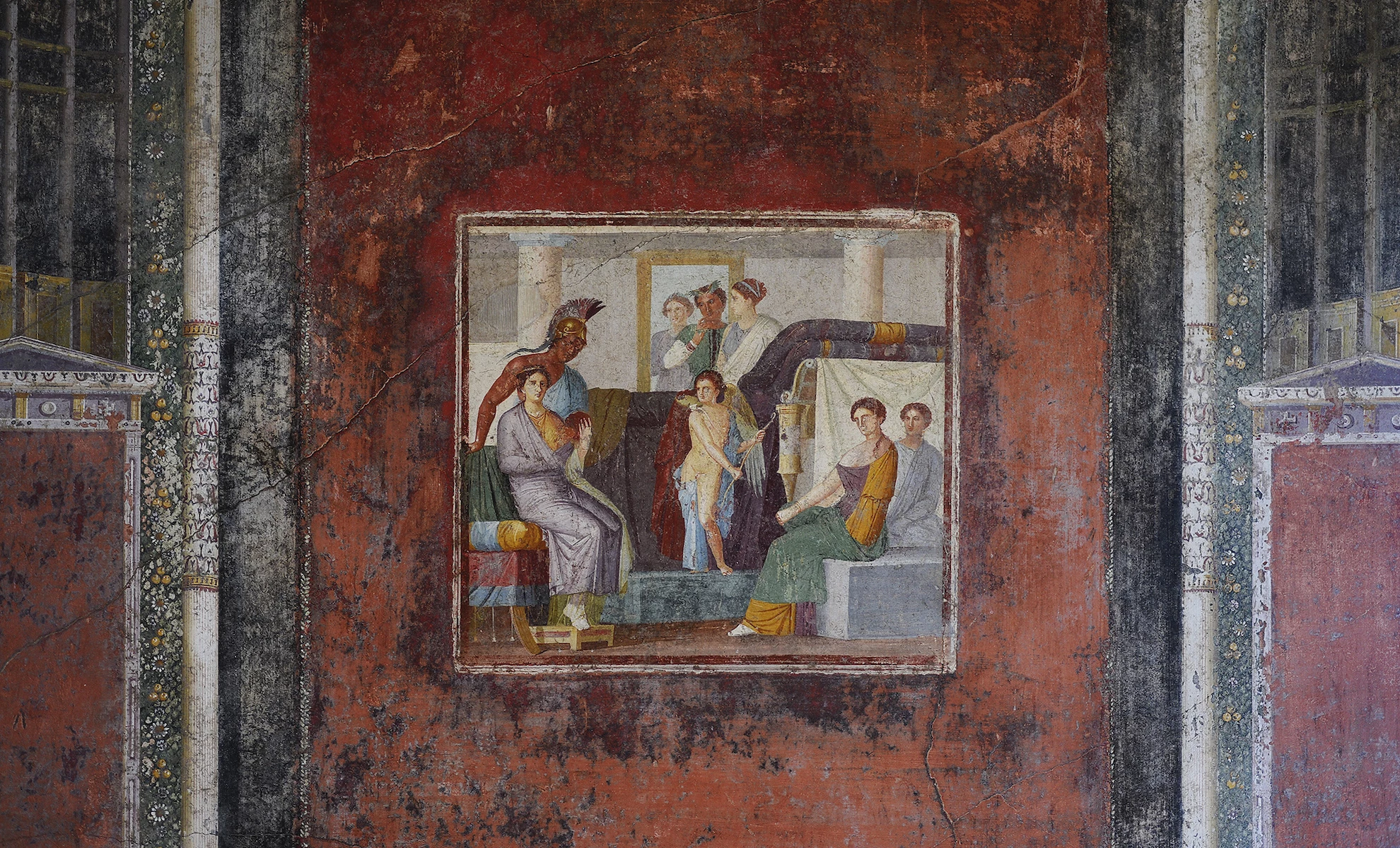The electoral inscriptions found in the excavations of Pompeii show how much unrest there was in the political life of the city. Marcus Lucretius Fronto was one of the personalities interested in the res publica.
He started a brilliant career becoming a candidate for the top offices of the time, as aedile and duumvirate, and probably he was a relative of the philosopher Titus Lucretius Caro.
Frontone came from one of the most prominent families of the civitas, arrived here in the Augustan age. In Pompeii he had a influential role and it is evident from the findings of four election posters painted on the entrance wall of his house. One of them called him “vir fortis et honestus” (“strong and honest man”).
Ph. Anna Monaco
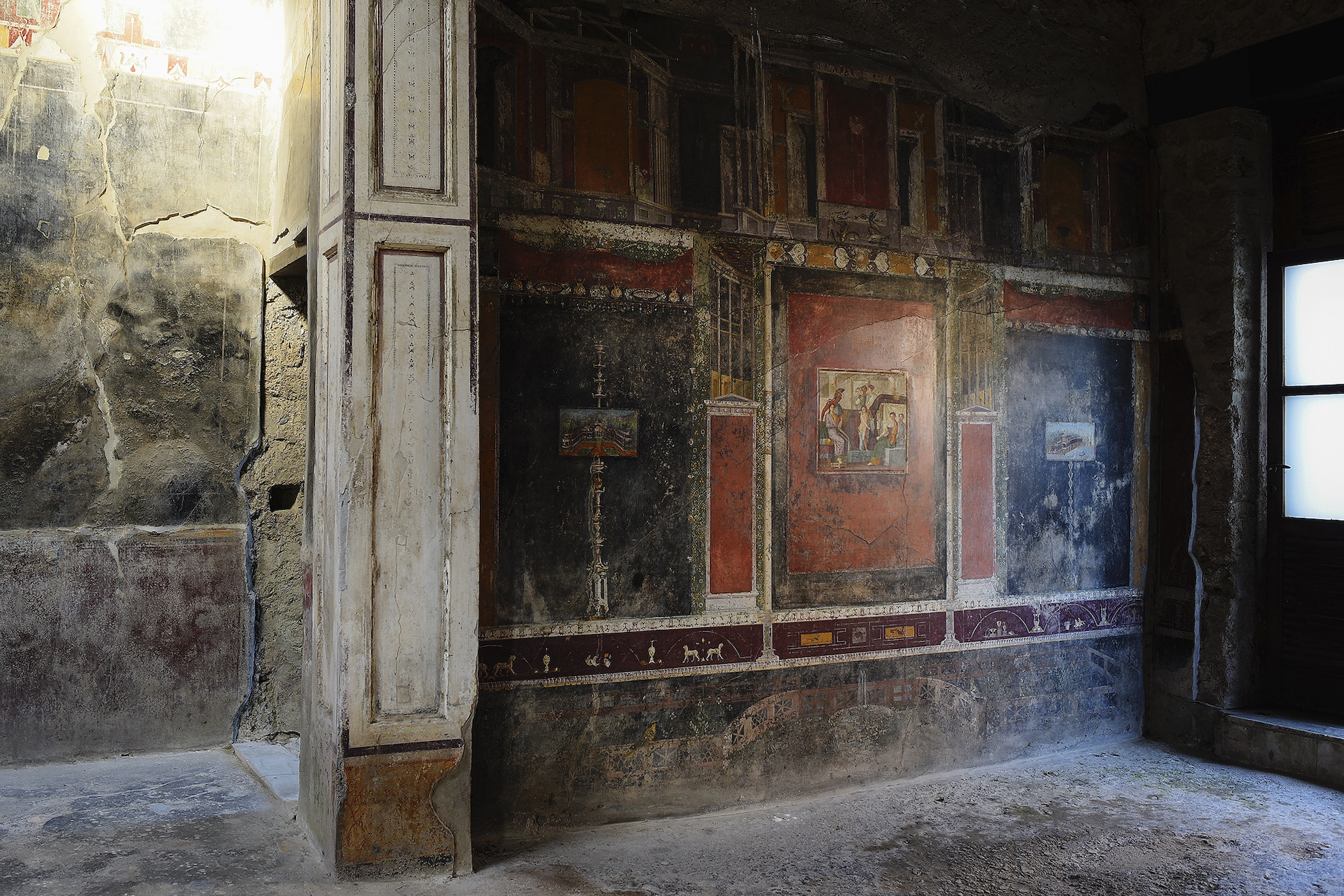
His house now is in Regio V, an area outside the large tourist flows of the archaeological site. A piece of hidden city, far from the streets where famous villas and breathtaking residences overlook. Seen from the outside, Frontone's doesn't seem to be an unforgettable house. But behind a unpretentious facade is one of the most elegant Pompeian domus.
Marvelous frescoes with bright colors and clearly visible details adorn the rooms. You are surrounded by sublime decorations, among the absolute best examples of Third Style painting, made with shades from black to red, up to an intense ocher. Flying cupids alternate with mythological stories, while hunting scenes between beasts and pets are drawn on the walls around the garden.
Sublime wall decorations | Ph. Anna Monaco
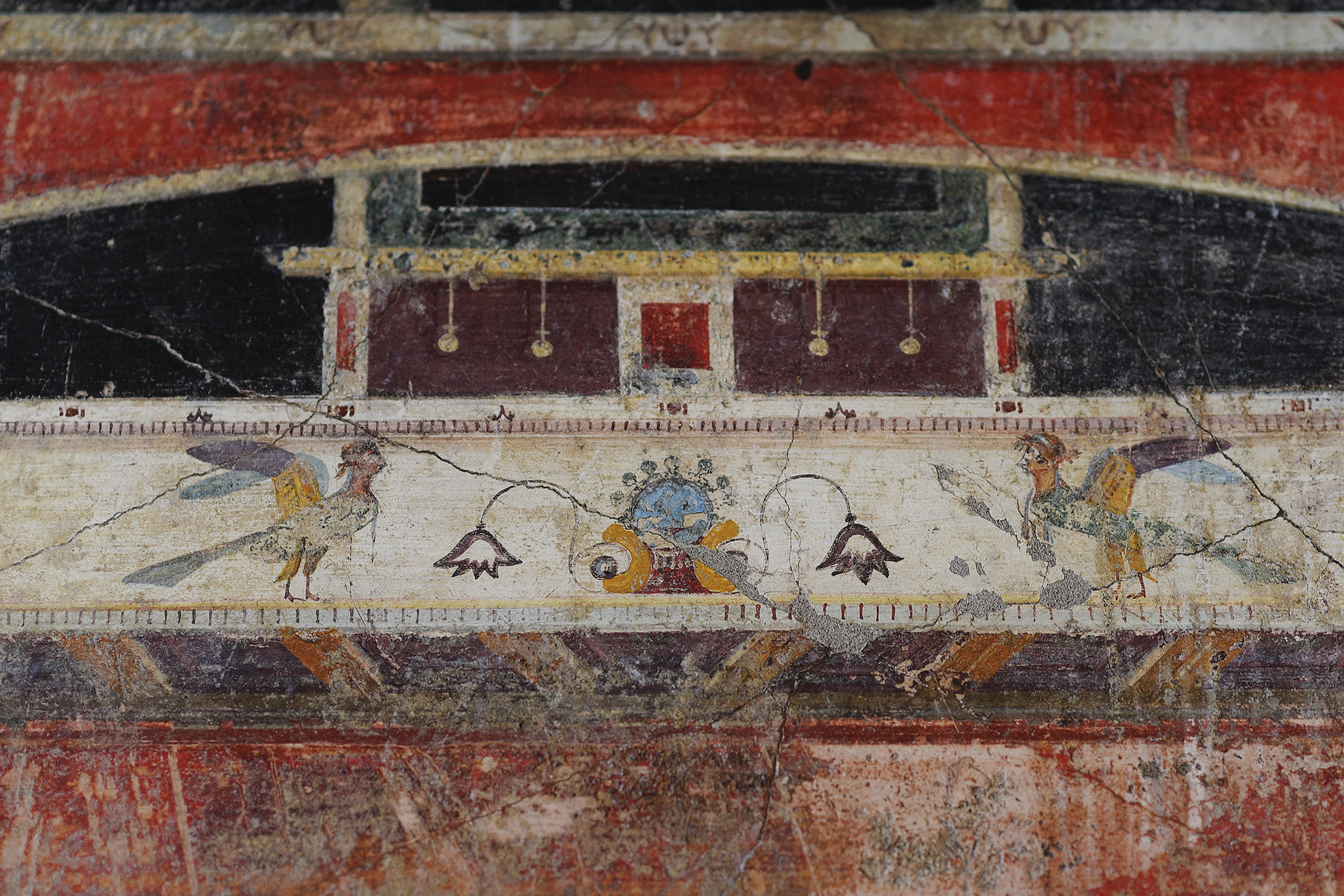
There are many literary references that highlight the intellectual level of the owner. Frontone was neither a banker like Lucio Cecilio Giocondo nor a parvenu like the Vettii, but a distinguished and virtuous patrician. And he wanted to highlight it in every corner of his 460 square meters apartment. It doesn't matter if he was a politician in the suburbs. In the empire everyone was part of a well-oiled mechanism and if a man from the suburbs was able to put together elegance and sobriety, his culture looked higher than that of many eccentric senators from Rome.
How refined the dwelling was, it can be perceived entering the atrium. In the center is the marble basin of the impluvium, with a border made of a black and white mosaic. The rest of the space, on the other hand, is paved with lavapesta (a mixture of mortar and fragments of lava) and inserts of colored marble. Next to the basin there is a marble table with lion's paws on which the finest furnishings were placed.
The fresco reproduces Orestes that kills Neoptolemus in front of the Temple of Apollo at Delphi | Ph. Anna Monaco
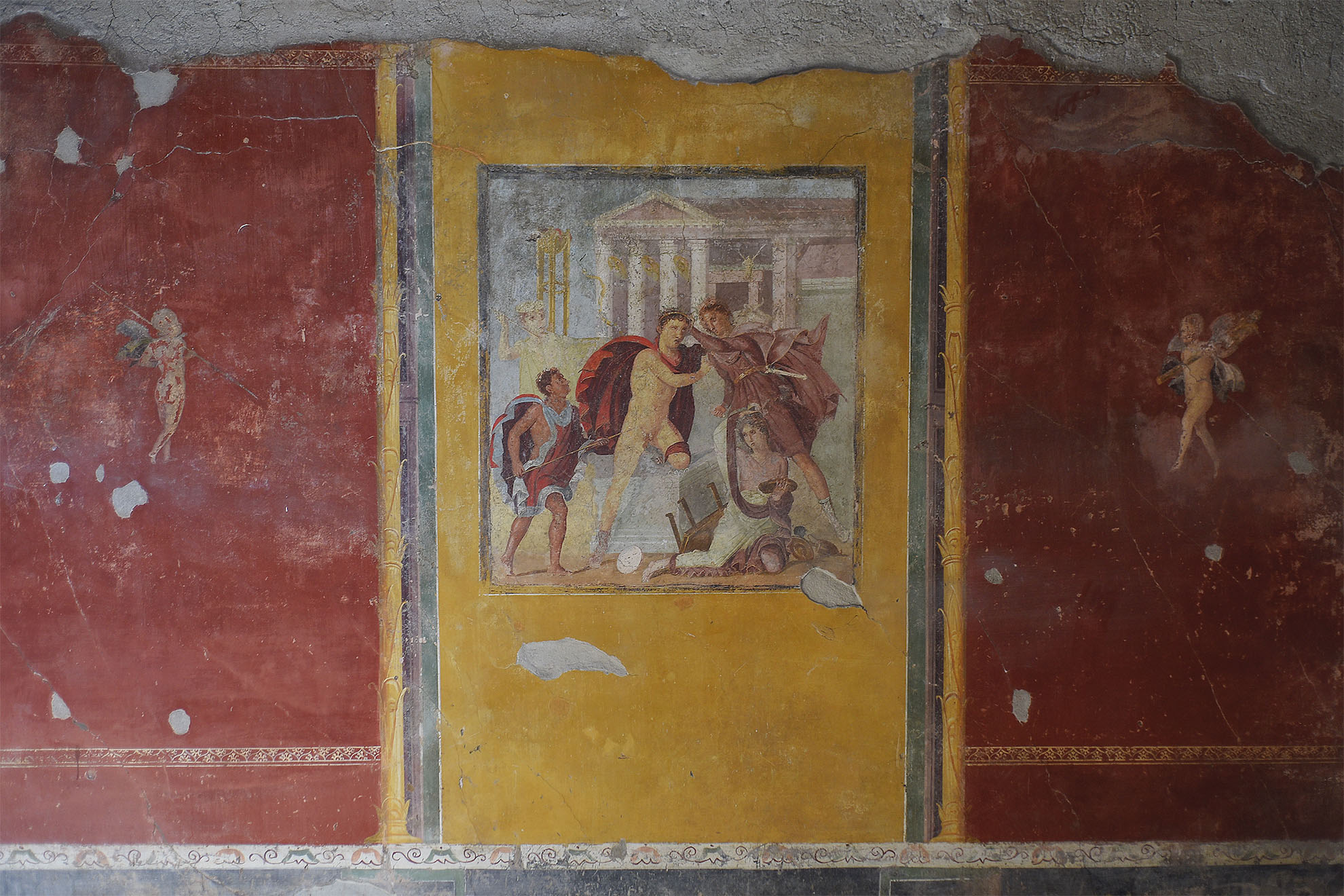
On each side of the atrium there are rooms, including the tablinum, specially used for reception. Here guests could admire the precious decorations on the black wall: small pictures with imaginary maritime villas supported by candelabra, alongside the most important frescoes: “the triumph of Bacchus and Ariadne” and “the loves of Venus and Mars”. The latter paints Mars bent over the goddess while he caresses her breast in the presence of Cupid. A sensual and intimate attitude very far from other much more provocative representations found in Pompeian houses.
The atrium of the house | Ph. Anna Monaco
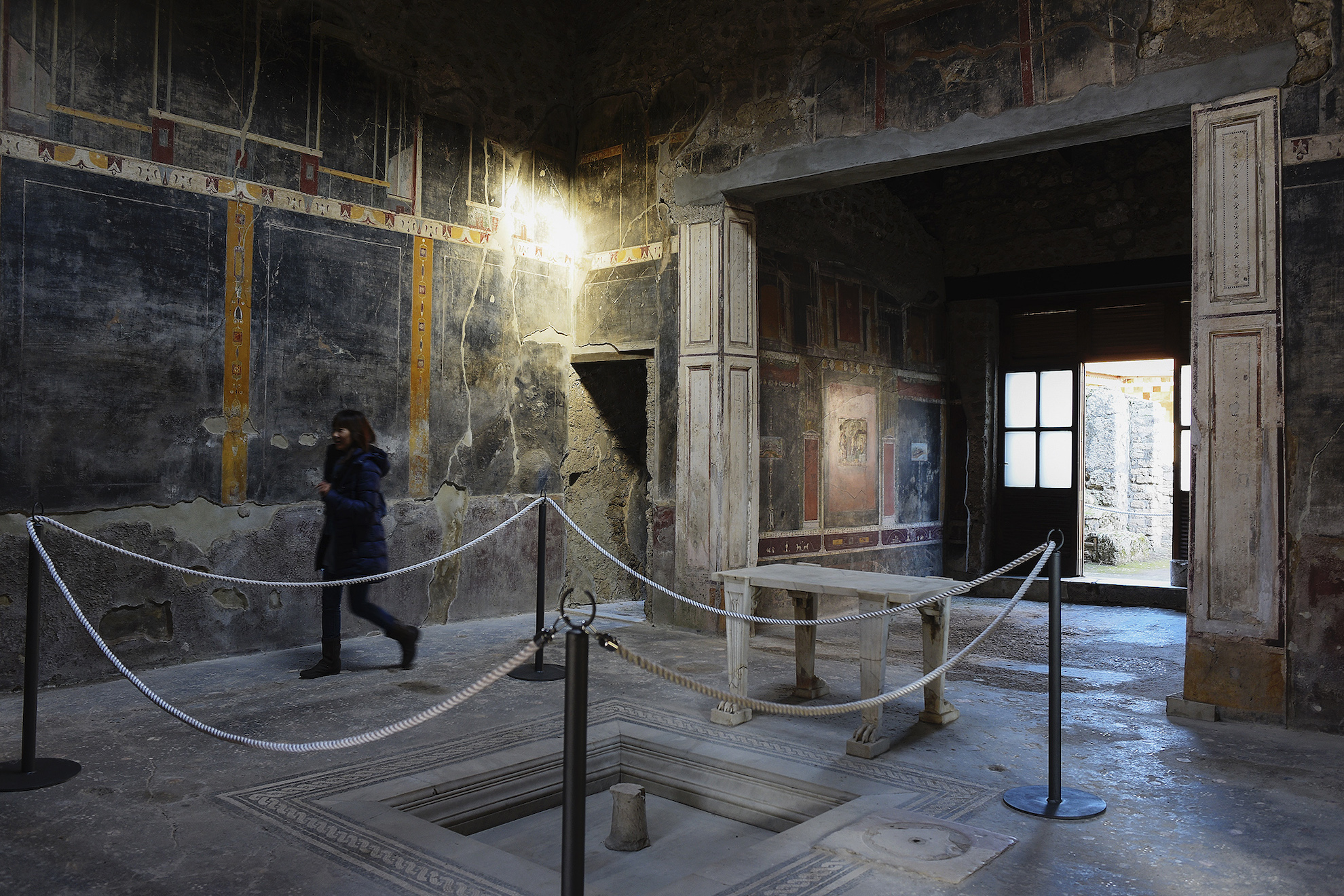
All this beauty lived for millennia with a macabre presence: the skeletons of five adults and three children, killed by the collapse of the roof during the eruption. Seven victims who tried in vain to save themselves in a place that looked safer. It is the synthesis of Pompeii, where the bright memories of a glorious life are crystallized together with the indecipherable terror of an inevitable death.

